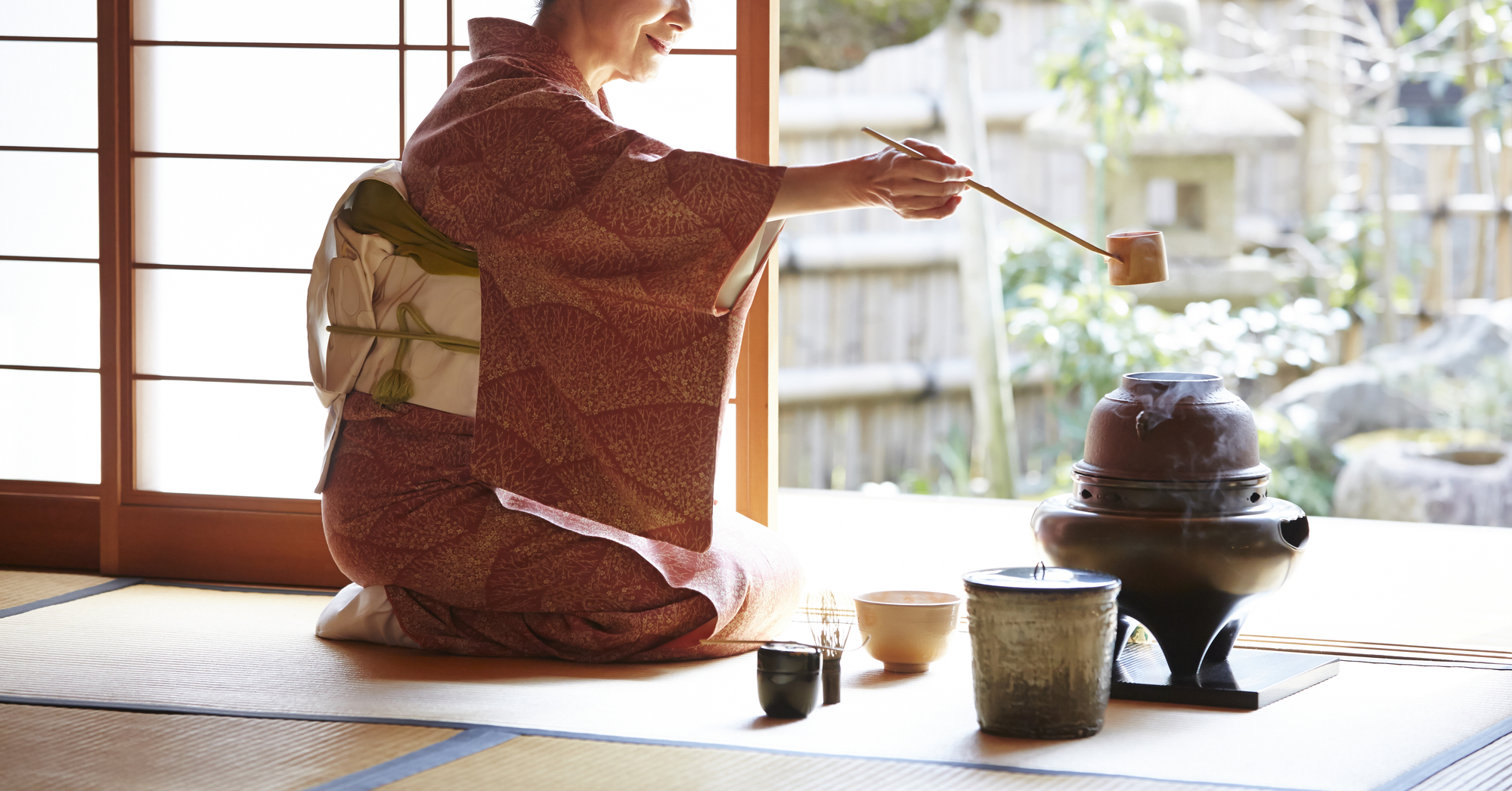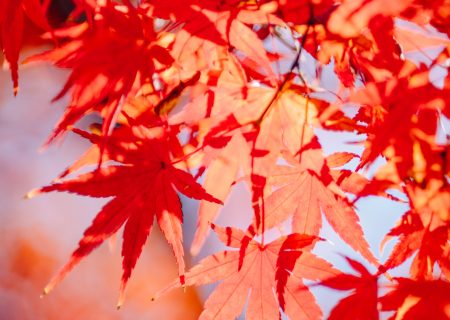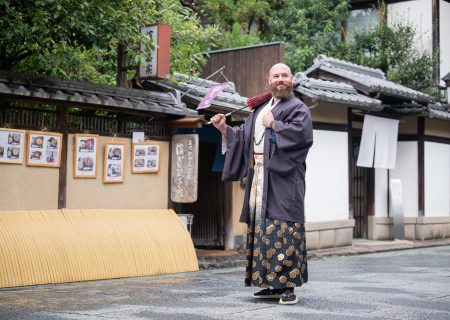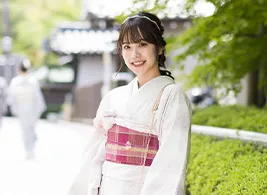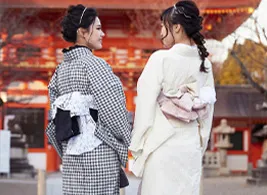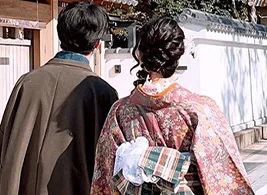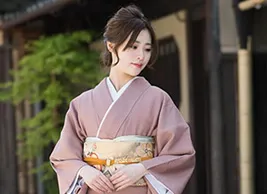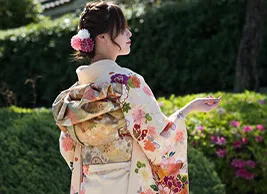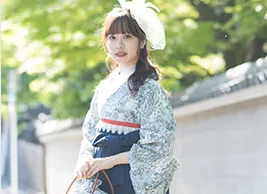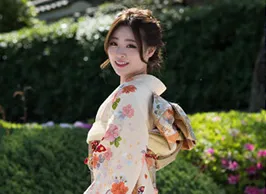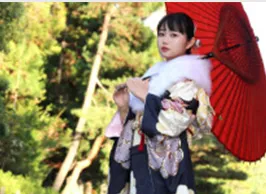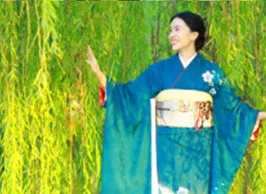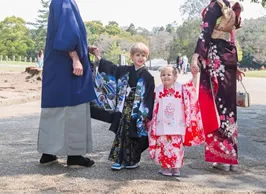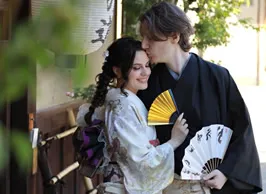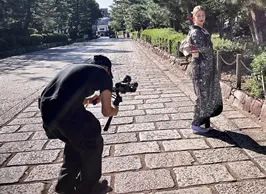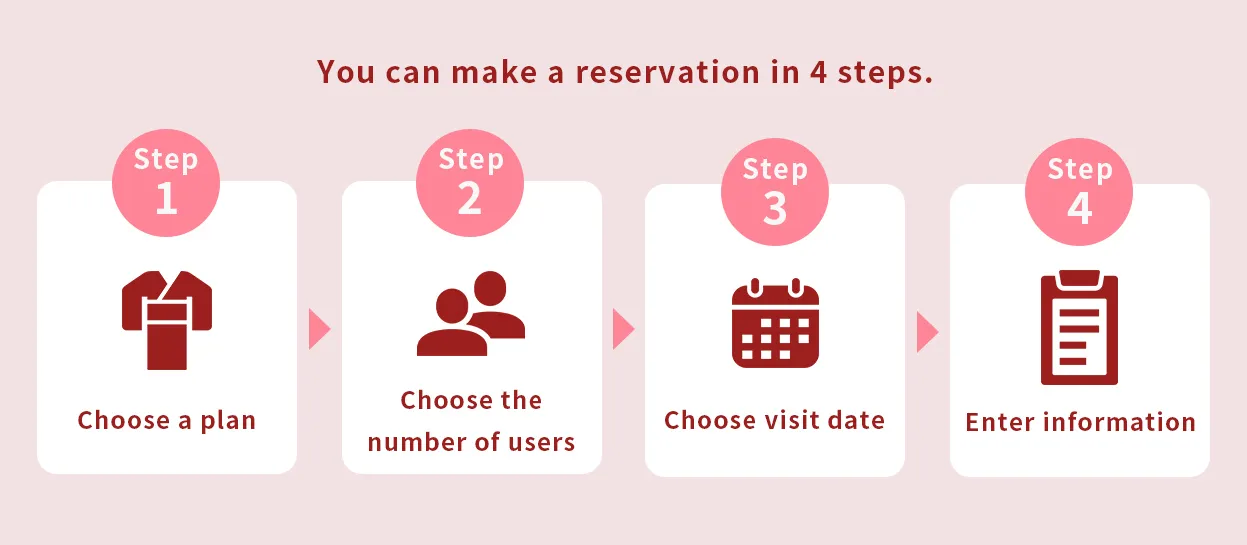Tea ceremony, a traditional Japanese culture, elevates the act of “making and drinking tea” to a “do.”
It is no exaggeration to say that the Japanese spirit is rooted in the etiquette and behavior of the tea ceremony. There are many words that are closely related to the tea ceremony, such as the attitude of hospitality and the concept of wabi-sabi.
On the other hand, the culture of matcha and tea sweets has also developed along with the tea ceremony. In Kyoto’s tea ceremony experience, you can not only learn about the spirit of the tea ceremony, but also enjoy hospitality such as matcha and sweets.
Don’t just experience a tea ceremony, but by wearing a kimono and experiencing a tea ceremony, you can fully rediscover the charm of Japan in the culture of the tea ceremony!
When considering rental kimono in Kyoto Please choose a wonderful kimono at [Waplus Kyoto], which has excellent access to Yasaka Shrine and Kiyomizu Temple!
Index
Tea ceremony experience in Kyoto!
In Kyoto, there are many shops that offer tea ceremony experiences using historic townhouses and tea rooms. There, you can not only watch the movements and teachings of the tea ceremony, but also calm your mind in the extraordinary space of the tea room and deeply enjoy the experience of the tea ceremony itself.
For example, Fukujuen, a famous tea shop in Kyoto, also offers tea ceremony experiences. Here, you will be taught how to behave in a tea room, and after making your own tea, you can enjoy tea and sweets. If you make your own tea, you will be able to enjoy it with a special taste.
The flow of the tea ceremony experience at Fukujuen is as follows.
(Tsukubai is a short bowl of water placed to wash your hands before entering the tea room.)
2. Go through the Nijiriguchi and enter the tea room. Take a look at the hanging scrolls in the alcove, selected for each season.
(Nijiriguchi is the entrance to the tea room. It is built a little low in height, and it was given this name because you can pass through it while sitting (nijiru).)
3. While watching the teacher prepare the tea, enjoy the sweets and light tea that are offered to you. (You can also get a lecture on the movements.)
4. Make your own tea while being taught. (You can rest assured that they will give you detailed instructions)
5. Enjoy the tea you made yourself.
■Address: 〒600-8005 Shijo-dori Tominokoji corner, Shimogyo-ku, Kyoto City
■Fukujuen Information about Kyoto main store, Kyo no Chaan
Additionally, at the Nishijin Museum of Living Tomita-ya in Kyoto, you can enjoy a tea ceremony experience as an option to the townhouse tour. In this tea ceremony experience, you can learn the basic rules you need to know when drinking tea in a tea room, such as etiquette at a tea ceremony and how to enjoy tea and tea sweets.
There is also an optional tea-making experience. If you don’t just want to watch a tea ceremony, but want to try it yourself, this is a good option.
■697 Ishiyakushi-cho, Kamigyo-ku, Kyoto-shi, Kyoto 602-8226
■Tea ceremony experience (Optional plan), Nishijin Museum of Life Tomita-ya
At the places mentioned above, you can have an authentic tea ceremony experience. However, depending on the location of the tea ceremony experience, there are many cases where kimono rentals are not available. If you want to enjoy the experience wearing a kimono, you will need to rent a kimono first.
By renting a kimono and participating in a tea ceremony experience, you can get a real feel for the culture of tea ceremony and the atmosphere of a tea room. You can also learn more deeply about the meaning of the teacher’s actions.
At Waplus Kyoto, we can help you choose the right kimono for your tea ceremony. Please feel free to contact us!
Kyoto Kimono rental plan, Waplus Kyoto
How to choose a kimono to wear to a tea ceremony experience
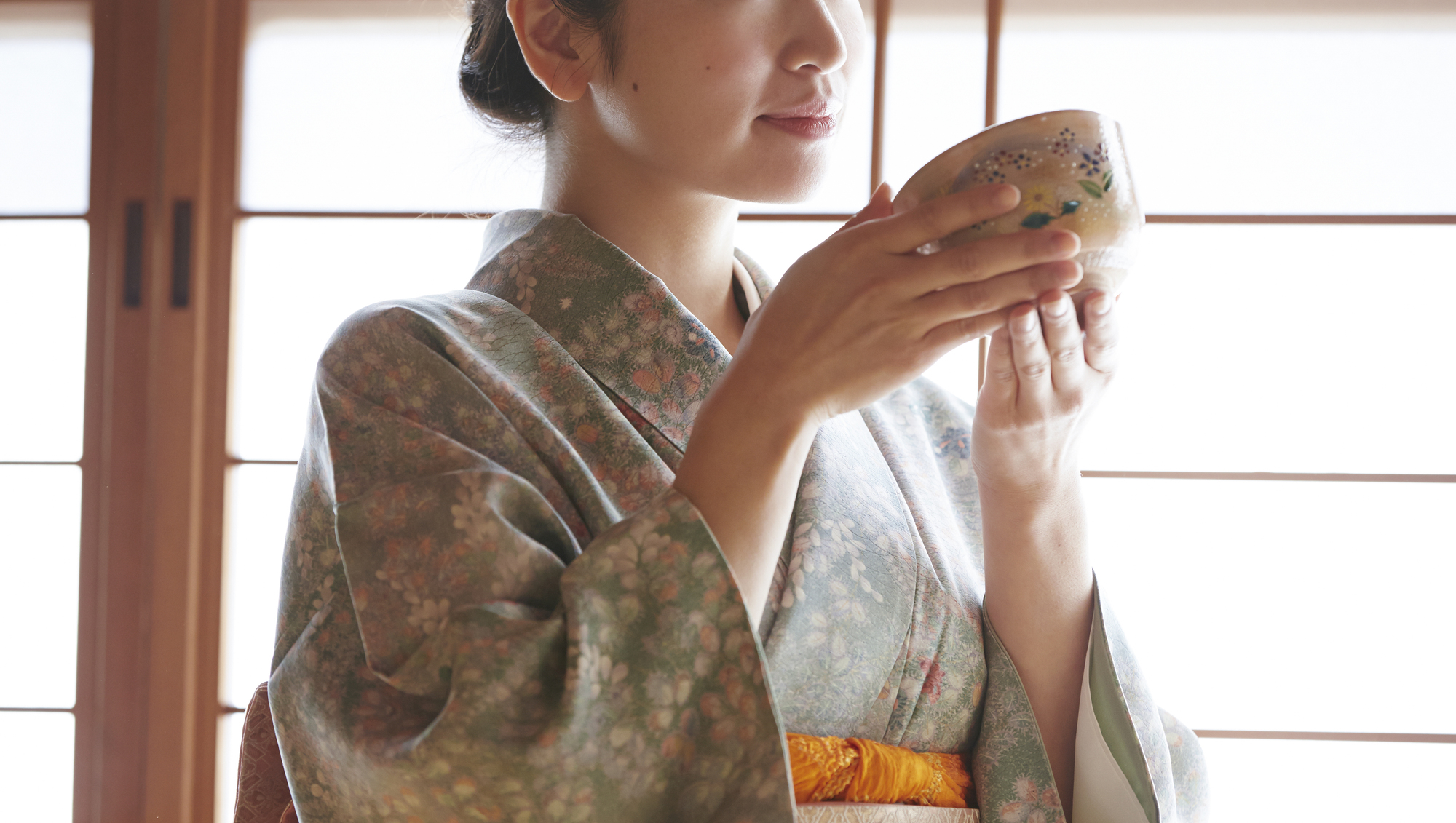
Once you have decided to try a tea ceremony, the next thing you need to think about is what kind of kimono to wear. As with clothes, what you should wear with a kimono also depends on the TPO.
A tea ceremony or a tea room is a calm rather than cheerful place, so we recommend choosing and wearing a kimono that is appropriate for the occasion. Specifically, the first kimono we recommend is a plain colored kimono.
A plain colored kimono is the most common type of kimono worn at a tea ceremony. Since it is a plain kimono, it is not very glamorous, but it can be said that it is a kimono that “If you put it on, you won’t take it off!” Since there is only one color available, we recommend finding the color that suits you best.
We also recommend the “homongi,” which has a pattern and gives a gorgeous impression. Homongi can be worn in a wide range of situations, from formal to casual, regardless of age or gender, and is also suitable for tea ceremonies.
Unlike plain colored kimono, homongi has a large pattern from the shoulders to the chest and sleeves, so it is perfect for those who think, “I don’t want a plain kimono,” or “I enjoy sightseeing, so I would like a kimono with a somewhat glamorous atmosphere.” Especially recommended.
Other recommended kimonos include the colored tomesode, which has a pattern only on the hem of the feet, and the komon, which has detailed patterns all over.
However, when choosing a kimono, there are those who are worried that their kimono will be seen as disrespectful to the tea ceremony teacher… or that they are unable to decide which kimono is appropriate for them. There are many.
In such cases, please feel free to ask our Waplus Kyoto staff. ! We will help you choose the appropriate kimono that will allow you to fully enjoy the gestures and spirit of the tea ceremony without being rude.
Kyoto Kimono rental plan, Waplus Kyoto
Three things to keep in mind when wearing a kimono at a tea ceremony
Many people who experience a tea ceremony in Kyoto say that this is their first time experiencing a proper tea ceremony. The tea room where the tea ceremony is held is an extraordinary space that is different from the usual. Therefore, you need to take a little different precautions than usual.
Here we will tell you the following three things to keep in mind when experiencing a tea ceremony wearing a kimono.
2. Tie the waist strap tightly around your eyes.
3. Lower the obi position a little lower.
First, I will explain the two points: 1. Place the correction towel firmly in place, and 2. Tie the waist strap tightly around the eyes.
During the tea ceremony experience in a tea room, you will be repeating the movements of “standing” and “seiza” more than you expected. As a result, unlike when you move on a chair, where you don’t have to bend your legs too much, your kimono tends to fall apart easily.
Therefore, first of all, by firmly inserting a correction towel, you will prevent the obi and waist straps from loosening and prevent the clothes from coming undone. However, it is meaningless if the waist strap itself is tied loosely, so you need to insert the correction towel firmly and tie the waist strap a little tighter.
If you tell the kimono rental shop that you’re going to experience a tea ceremony, they might tighten the waistband a little harder, but there’s a reason why. Therefore, it is recommended that you tighten it firmly enough that it does not cause any pain.
Also, “3. Place the obi a little lower” is related to the behavior during the tea ceremony.
At the tea ceremony, tea cakes are served using paper called kaishi or fukorogami. This kaishi must be kept close to the chest before and after eating tea and sweets.
In order to perform the action of “pinning the kaishi to the chest”, the obi must be positioned low so that the kaishi can be easily inserted into the collar at the front of the top. For this reason, in a tea ceremony, the key point when wearing a kimono is “3. Place the obi a little lower.”
If you have your kimono dressed at a kimono rental shop, you may not need to be very careful about these points yourself. However, by knowing the precautions when wearing kimono, you can realize the importance of kimono at the tea ceremony experience.
By doing so, you will be able to enjoy the culture of the tea ceremony not only from the physical and spiritual aspects, but also from the kimono aspect.
Summary
So far, we have told you about the places where you can experience a tea ceremony in Kyoto and the kimonos that are suitable for a tea ceremony. We have also introduced some points to keep in mind when dressing for a tea ceremony.
The tea ceremony is a part of Japanese culture that has been passed down since ancient times, and the spirit of historical Japan is rooted in it. You will be able to enjoy the tea ceremony experience more deeply by wearing a kimono and learning how to perform the tea ceremony, how to make tea, and how to enjoy it.
When choosing a kimono suitable for a tea ceremony, we Waplus Kyoto I would be happy if I could help you with!
If you want to rent a kimono in Kyoto, know the kimono patterns. Let’s keep it ~What are the popular classic patterns~
Tag
Author of this article
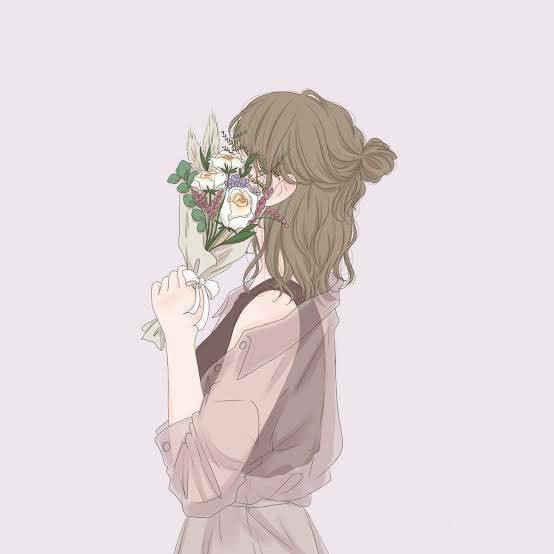
Waplus Yasaka Shrine store staff
Ayana Ogawa
We would like to help many customers smile through kimono rental.
I love spending time listening to customer requests and proposing kimono coordination and deciding on hair styles!
I am particularly good at hair styling, so please leave it to me to create the currently popular feminine hair.
I'll make it look cute!
My hobbies are music, movies, and shopping!
Please come and visit Waplus Kyoto!
We will suggest cute coordination!


